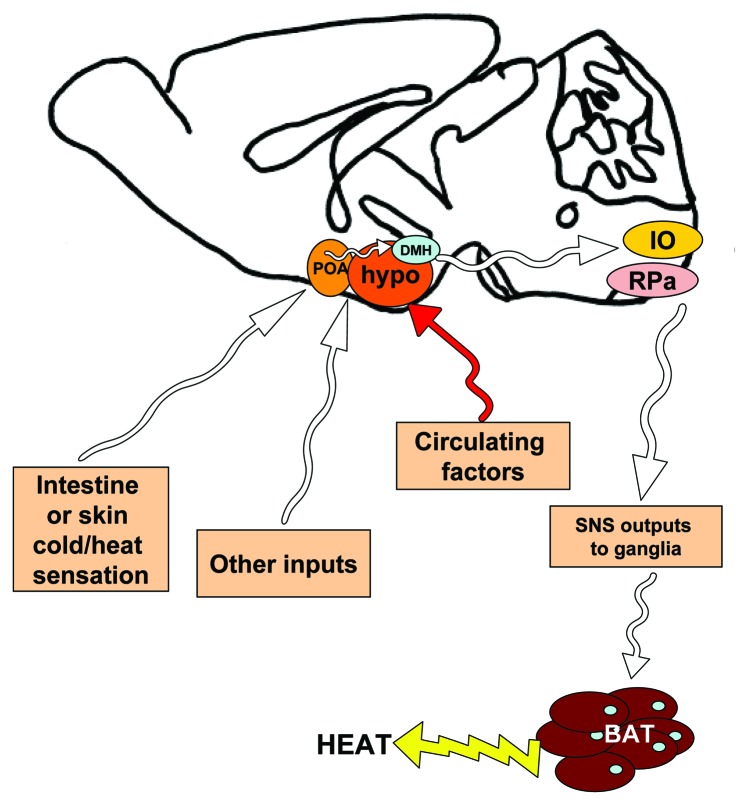Figure 3. Simplified schematic of neural pathways in the mouse brain which affect sympathetic outflow to brown adipose tissue. Using rodent models, neuroscientists have begun to identify which neural pathways are involved in signaling temperature status (such as cold) to the brain, followed by sympathetic stimulation of brown adipose tissue in order to initiate thermogenesis. Some of these findings are summarized in this mid-sagittal view of a mouse brain, but for a complete review see Morrison et al. Cold temperature is sensed by the pre-optic area (POA), rostral to the hypothalamus (hypo). The POA sends signals to the hypothalamus, including the dorsomedial hypothalamus (DMH). Other hypothalamic nuclei are also involved in relaying various signals related to energy status, in response to various neural inputs and circulating factors. Neural outputs from the hypothalamus reach the inferior olive and GABAergic centers in the raphe pallidus (RPa) in the medulla of the brain stem. From here, sympathetic outputs are activated and send afferents to the sympathetic ganglia, followed by the brown adipose tissue, where catecholamine neurotransmitters are released from sympathetic nerve terminals, to act on adrenergic receptors there. White arrows represent neural pathways.

An official website of the United States government
Here's how you know
Official websites use .gov
A
.gov website belongs to an official
government organization in the United States.
Secure .gov websites use HTTPS
A lock (
) or https:// means you've safely
connected to the .gov website. Share sensitive
information only on official, secure websites.
